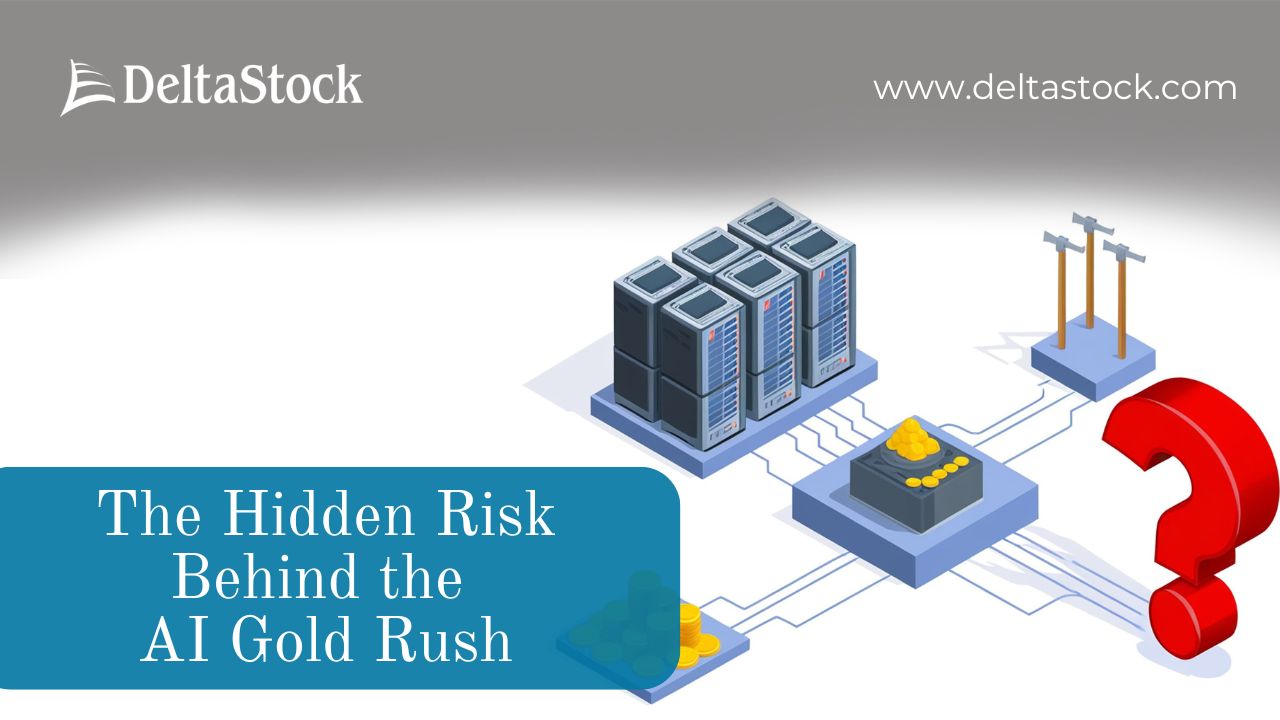
The global AI boom has become the defining investment story of the decade. Capital is flooding in, demand for computing power is exploding, and tech valuations remain near record highs. But behind the headlines of trillion-dollar market caps and breakthrough products, a quieter truth is emerging—one with serious implications for traders navigating today’s overheated tech landscape.
The companies supplying the infrastructure for AI are posting record profits. But the companies building the AI models themselves? Many are bleeding cash at a rate rarely seen in the history of technology.
And nowhere is this paradox more visible than in OpenAI’s latest financial revelations.
A $11.5 Billion Warning Shot
OpenAI—operator of ChatGPT and a driving force behind the modern AI boom—posted more than $11.5 billion in losses in Q3 2025 alone. That’s not a typo. The company responsible for the world’s most widely recognised AI assistant burned more money in one quarter than some Fortune 500 firms spend in an entire year.
The scale of the loss only came to light through Microsoft’s SEC filings. Microsoft’s after-tax share of OpenAI’s losses came to $3.1 billion. Since Microsoft holds roughly 27% of OpenAI using equity accounting, the math points to an overall quarterly loss of roughly $11.5–12 billion.
More striking still: OpenAI expects to lose about $74 billion in 2028 and sees cumulative losses hitting $115 billion by 2029 before any meaningful profitability.
This isn’t “startup burn.” It’s a financial black hole.
The Real Winners: The Companies Selling the Shovels
While OpenAI’s losses grow, the firms supplying its computing power are thriving. The third quarter of 2025 unveiled a clear pattern:
- Microsoft: $34.9B in quarterly CapEx (+74% YoY), $27.7B in net income despite absorbing OpenAI’s losses.
- Alphabet: $91–93B projected CapEx for 2025, cloud revenue up 35%, total quarterly revenue surpassing $100B for the first time.
- Meta: $70–72B CapEx guidance for 2025, doubling spending YoY with more increases planned for 2026.
- Amazon: $34.2B in Q3 CapEx (+60% YoY), moving toward $125B in 2025.
Combined, these companies are tracking over $380 billion in AI infrastructure spending in 2025—exceeding 1% of U.S. GDP. A large chunk of those expenditures are covered by companies offering AI services like OpenAI and Anthropic.
The Profitability Divide Widens
The economic split in the AI sector is becoming impossible to ignore.
OpenAI’s current profile:
- Spending $1.69 for every $1 of revenue
- Annualised revenue estimated at $13–20B
- Cash burn ~70% of revenue
- Profitability expected no earlier than 2029–2030
Anthropic’s contrasting model:
- A more conservative path toward profitability by 2028
- Spending far less—estimated at 1/14th of OpenAI’s pre-profit burn
- Focused heavily on enterprise clients (≈80% of revenue)
- Avoiding costly consumer features such as video and image generation
Two different strategies; two very different cost structures.
What This Means for Traders
The AI sector is entering a new phase—one characterised not by hype alone, but by increasingly visible financial realities. Here’s what forward-looking traders should consider:
1. Infrastructure remains the safer, more liquid play
Cloud giants, chipmakers, and data-center suppliers continue to benefit from explosive AI demand—without taking on the existential risk of building AI models themselves.
2. The “AI bubble” debate isn’t going away
When Sam Altman openly says he doesn’t care if the company burns $500 million, $5 billion, or $50 billion per year, markets start questioning what sustainable spending looks like.
3. Prepare for volatility around earnings season
We’re already seeing markets react negatively when CapEx jumps faster than revenues. The next quarters are likely to amplify these dynamics.
4. Systemic risk is building around AI’s biggest players
If OpenAI falters, the shockwave could hit multiple supply chains: cloud capacity, chip demand, energy infrastructure, and even sovereign investors.
5. The 2030 profitability narrative is now a critical benchmark
OpenAI projects $200B in revenue by 2030 to justify its trajectory. If that target slips—or if competitors seize market share—the sector’s risk profile changes dramatically.
Bottom Line: In the AI Gold Rush, Know Who’s Selling the Shovels
The AI revolution is real, but the economics aren’t evenly distributed. Companies supplying the hardware, compute, and cloud infrastructure are generating dependable profits. Companies betting billions on AI model dominance are taking unprecedented risks that could yield historic returns—or historic write-offs. For traders, the lesson is clear:
Follow the cash flows, not the hype. Prioritise the proven earners over the big spenders. And watch closely as the market shifts from excitement to expectation.
The gold rush is far from over—but not everyone digging will strike gold.
Open Your Trading Account NOW!
These materials are for information purposes only. They do not post a buy or sell recommendation for any of the financial instruments herein analysed.
Deltastock AD assumes no responsibility for errors, inaccuracies or omissions in these materials, nor shall it be liable for damages arising out of any person’s reliance upon the information on this page.
58% of retail investor accounts lose money when trading CFDs with this provider.